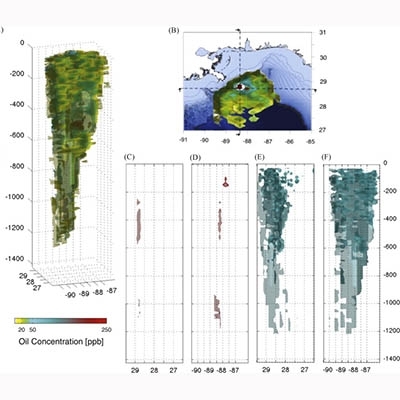
Simulating the effects of droplet size, biodegradation and flow rate on the subsea evolution of deep plumes from the Macondo blowout
The relative effects of hydrodynamic, thermodynamic, and geochemical factors on the fate and transport of oil in the subsea are not well understood to date. This glaring lack of knowledge in deep-sea spill studies precludes the parameterization of blowout far-field models. Here we use observations from the Macondo blowout to evaluate the importance of input variables in a numerical model of oil transport and fate. We adapt a multi-hydrocarbon fraction module to oil dissolution and run sensitivity analyses under various parameterization scenarios. We find that the inclusion of oil droplet atomization, variable flow rates (VFR), high-pressure biodegradation (HPB), and vertical currents׳ velocities (VV) affects significantly the subsea oil mass distribution in the water column as well as the evolution of deep plumes. In particular, droplets up to 50 μm are neutrally buoyant and moved by deep currents predominantly driven by the topography, while the depth of the deep plume is very sensitive to the VV of the hydrodynamic model. We find good agreement between CTD cast observations and modeled mean depth of the oil mass, whereby HPB provide increased accuracy of predictions with time. The model suggests that VFR and HPB are mechanisms for the persistence of the southwestern deep plume observed at 1100 m by increasing the residence time of the oil in the water column. Modeled oil concentrations range from 5 to 500 ppb and present the highest values in the western and deepest locations of the subsea plume, which corroborate with field observations. We hypothesize that a substantial amount of subsea oil mass might have interacted with the bottom of the Mississippi Canyon.


